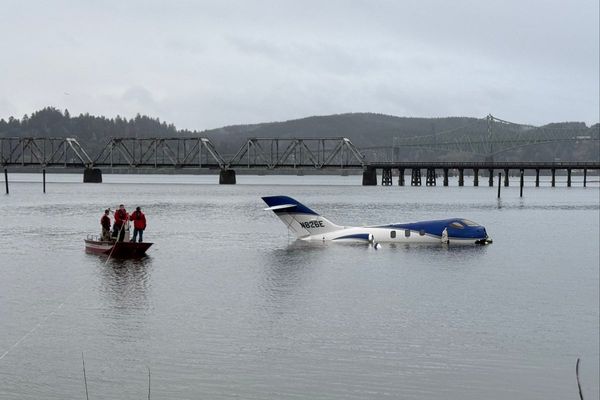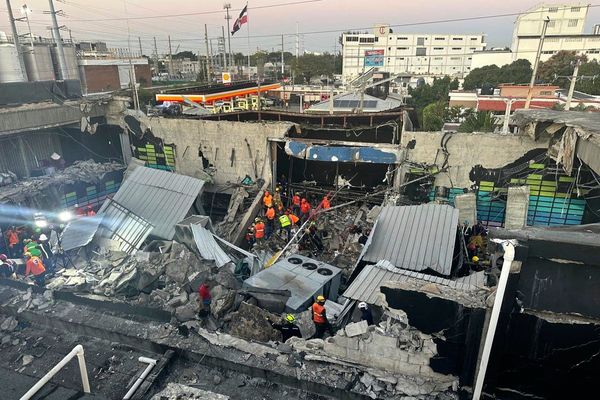According to chilling family legend passed down through generations, it was a ghostly apparition and bloodcurdling scream for help that led to the tragic discovery of the bodies of a young mother and her daughter.
History passed down by descendants tells that, in 1884, workers were camping on a sheep station at Maryvale, western Victoria, when they claimed they saw a figure of a woman screaming and a baby crying.
Next morning the workers persuaded the police to search the area.
To their horror the constabulary quickly discovered the skeletal remains of Maria Langley and her toddler Louisa concealed under a large, fallen tree not far from the campsite — according to Kevin Ryan, a great-great-nephew of Maria's.
The boot still on her foot identified the adult remains as Maria, and the child, Louisa, had the remains of a leather stirrup around her neck.
Maria's gold wedding ring and brooch were also found among her remains.
More than 130 years have passed since the gruesome discovery, but Mr Ryan and another descendant, Lynette Van Vondel, are determined to find the bones of the mother and child.
And their search has led them to the Edenhope cemetery, in western Victoria.
Who was Maria Langley?
Maria Langley led a tough life.
At 15 years old, she was sent to the South Australian town of Mount Gambier as an indentured servant to local baker Joseph Sugars, who was believed to have repeatedly sexually assaulted the teen, Mr Ryan said.
Ms Van Vondel, Maria's great-niece, said Maria ran away from the bakery several times but was arrested and sent back to finish her contract.
Maria fell pregnant to the baker, and was eventually taken in by her father to have the child, a move which was uncommon at the time.
Mr Ryan said Joseph Sugars paid a man named Robert Cook to marry her to make Louisa's birth legitimate.
Just days into their marriage Maria, Louisa and Robert Cook set off for Rupanyup in Victoria to start their new life.
At an 1884 inquest into her death, Maria's family members said they believed the marriage was agreeable to both parties but a traveller, who camped next to the family for a night, said Robert seemed cross — particularly with Louisa — and handled her roughly.
"We believe there was some sort of argument and one thing led to another and they disappeared," Ms Van Vondel said.
More than meets the eye?
Ms Van Vondel said police suspected Robert Cook of foul play when Maria went missing, but he assumed the identity of a man he was also suspected of murdering, before taking his own life.
His body was found in the Serviceton dam near the South Australian border.
When Maria and Louisa's remains were found, they were taken to the Edenhope police station and stored in the stables in a box until their murder could be solved.
"It was a cold case [so] they were unable to be buried because they wanted the bodies as evidence," Ms Van Vondel said.
But after more than 30 years without answers, special permission was granted from Victoria's Parliament for them to be buried at the local cemetery.
They were buried in an unmarked grave in 1918, but its whereabouts is unknown because the cemetery records were destroyed in a fire in the 1960s.
"We have no idea what part of the cemetery they're buried in," Mr Ryan said.
Help from an unlikely source
Without cemetery records, the family didn't know where to begin.
That was until divers from Mount Gambier, who recently obtained a ground-penetrating radar, offered to help.
"We've been using that in cave country but this is the first time we've used it for something quite different," Ian Lewis, a geologist and science officer for the Cave Divers Association of Australia, said.
He explained the radar was able to detect disturbances in the soil from excavations, including burials, which could help the family.
But not having a definitive search area within the cemetery was a challenge.
"If we had the old plans here … then I'd feel more confident that we were above something to find," he said.
"Additionally, it's quite likely that wooden boxes or caskets have disintegrated into the grave site itself.
"Whether the radar can detect more subtle differences in soil because of age is what we're trying to find out."
Mr Lewis said if Maria and Louisa's skeletal remains were clustered together that would make them easier to detect.
"In other parts of the world ground penetrating radar has been used to find shallow graves around Stonehenge in Britain and fossil remains for extinct animals … so maybe the bones might be the things that show up," he said.
The researchers have now visited the cemetery and scanned a section of what they believe could be a burial site, but it will take some time to analyse the data.
It is not yet clear whether they will ever conclusively determine where the pair were buried.
The family must now wait for the results, hoping the researchers have found something that brings them a step closer to finding their ancestors.
"It's a tall order but we hope we can define where Maria and Louisa have been laid to rest and we can mark the area for them and for others that could be buried close by," Ms Van Vondel said.
For the family, a headstone would be the ultimate honour.
"That they're not forgotten and that we'll always remember them," Mr Ryan said.







